You know the feeling. It’s 1 a.m. You’re on the seventh take of a simple sentence. Your voice is shot, the dog barked midway through the last perfect read, and your inner critic is screaming that it’s still not good enough. This is the burnout bottleneck. It’s the single biggest barrier between your ideas and your audience.
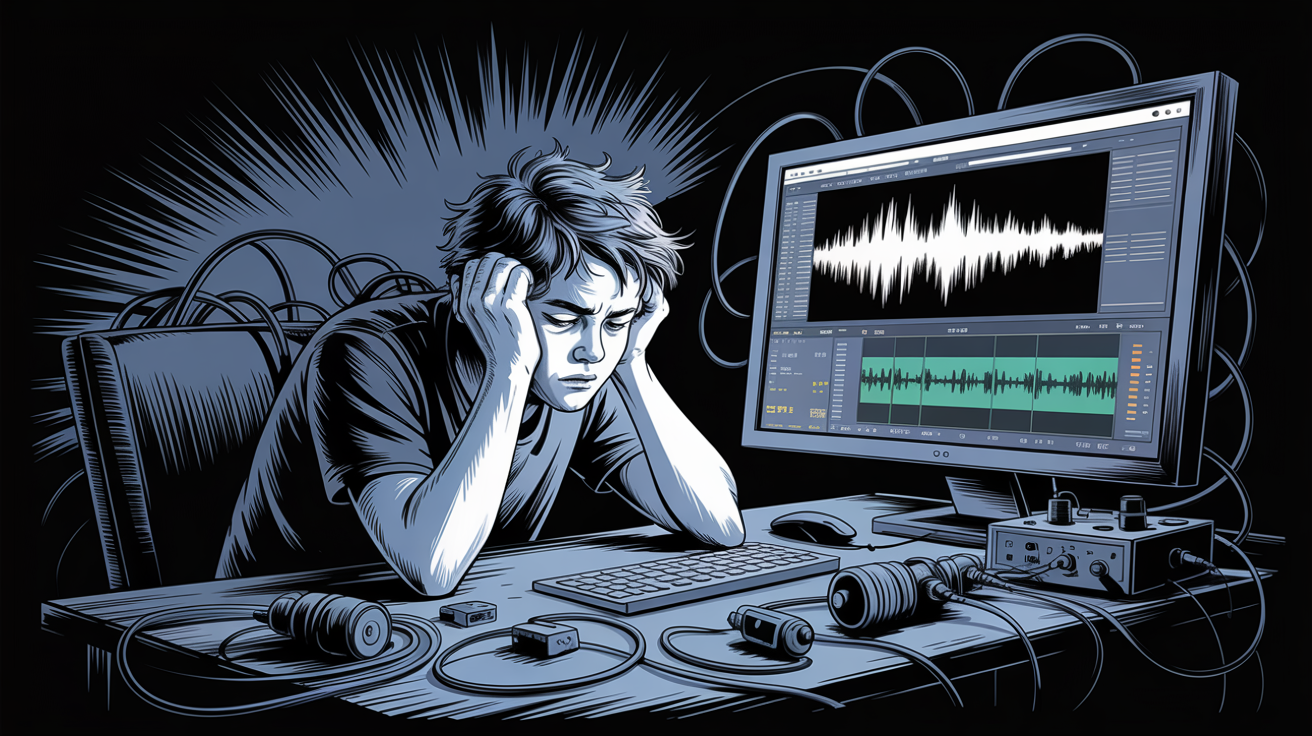
We’ve been told the only way out is to grind harder. But a growing number of savvy creators have found a different path. They've discovered an unfair advantage that lets them bypass the grind entirely. It’s not about replacing their voice; it’s about upgrading their workflow with an AI version of themselves—an tireless digital twin that nails the take every single time.
This isn’t another boring guide about "what is voice cloning." This is a playbook of the advanced, often hidden, strategies that creators are using right now to reclaim thousands of hours, multiply their content output, and achieve a level of creative freedom they never thought possible. Prepare to rethink your entire production process.
The Authenticity Paradox: Why an AI Voice Can Be More "You" Than You
The number one fear creators have about AI voice is losing authenticity. It's a valid concern rooted in years of robotic, uncanny valley audio. But here's the counter-intuitive truth: a high-quality voice clone can actually make your content more authentic.
How? Because it separates your ideas from the physical act of performance.
Your human voice is inconsistent. It's affected by your energy levels, your mood, if you have a cold, or if you just had too much coffee. A voice clone, however, is the "perfect average" of you at your very best. It's the version of your voice from that one day when you were perfectly warmed up, in a great mood, and nailed every line. It's you, consistently on your A-game.
As one creator on the r/partneredyoutube subreddit put it, while debating the ethics of AI voice: "The AI is just a tool, like my camera or my editing software. My thoughts, my script, my editing style—that’s the 'me'. If the tool helps me deliver my ideas better and more often, isn't that more authentic than not publishing at all because I'm too tired to record?"
This frees you to focus on what truly matters: the quality of your writing, the strength of your arguments, and the originality of your ideas. The AI handles the labor of consistent performance; you provide the soul.
The Multiplier Effect: Stop Thinking 10x, Start Thinking "Content Atomization"
Saving time on one video is a small win. The real game-changer is using your voice clone to atomize a single piece of work into a dozen different assets. This is the strategy that separates prolific creators from the rest.
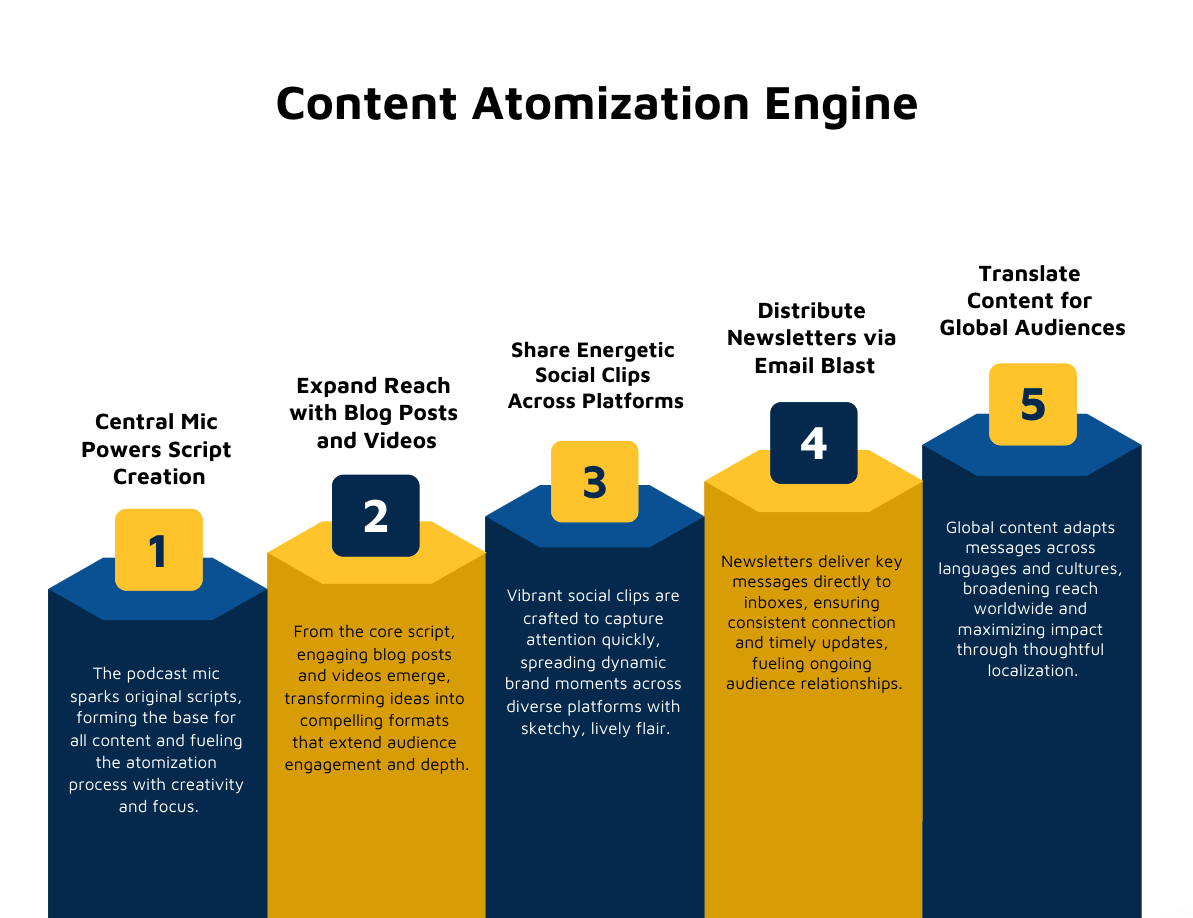
Imagine this workflow:
- The Core Script: You write one 2,000-word script for a deep-dive YouTube video.
- Instantaneous Generation: Instead of spending hours recording, you drop the script into a platform like Kukarella.
- The Atomization Begins: Within minutes, you can generate:
- The Main YouTube Voiceover: Using your primary cloned voice.
- The Podcast Episode: The exact same audio, repurposed for Spotify and Apple Podcasts.
- The "Hype" Social Clips: You take 3 key snippets from the script, but this time you apply a "high-energy" or "excited" Custom Voice Style to your clone. Now you have three unique voiceovers for TikTok, Reels, and YouTube Shorts.
- The "Contemplative" Patreon Version: You generate an audio-only version for your patrons using a "calm" or "thoughtful" style, offering them an exclusive experience.
- The Multilingual Expansion: With a single click, Kukarella can render the same script in Spanish, German, and French using your cloned voice's unique characteristics. You’ve just gone global without speaking a word of another language.
From one script, you haven't just created one piece of content.
You've created an entire campaign of 5-10 assets, each tailored to its platform, in a fraction of the time it would take to record just the original video.
PLOT TWIST: Your Voice is Now a Searchable Database
When you use a platform that integrates transcription with voice cloning, like Kukarella's TranscribeHub, every word you've ever said in a recording becomes a searchable text asset. Need to find that one time you mentioned "reciprocal inhibition" in a fitness video from two years ago? You can search for it, find the exact text, and instantly re-generate the audio in your perfect cloned voice for a new video. Your entire content history becomes a reusable library.
The Director's Chair: Three Advanced Strategies You Can Try This Week
This is where we move beyond theory and into actionable, high-impact tactics.
1. Performance A/B Testing
Struggling to hook your audience in the first 30 seconds of a video? Stop guessing what works.
- The Tactic: Create two versions of your intro script. Use your voice clone to render one in an "upbeat and energetic" style and the other in a "curious and mysterious" tone.
- The Test: Run the two intros as separate social media video ads targeting your core audience, or simply ask your community which one they prefer.
- The Result: You get concrete data on what vocal style resonates most with your viewers, allowing you to optimize your delivery for maximum retention.
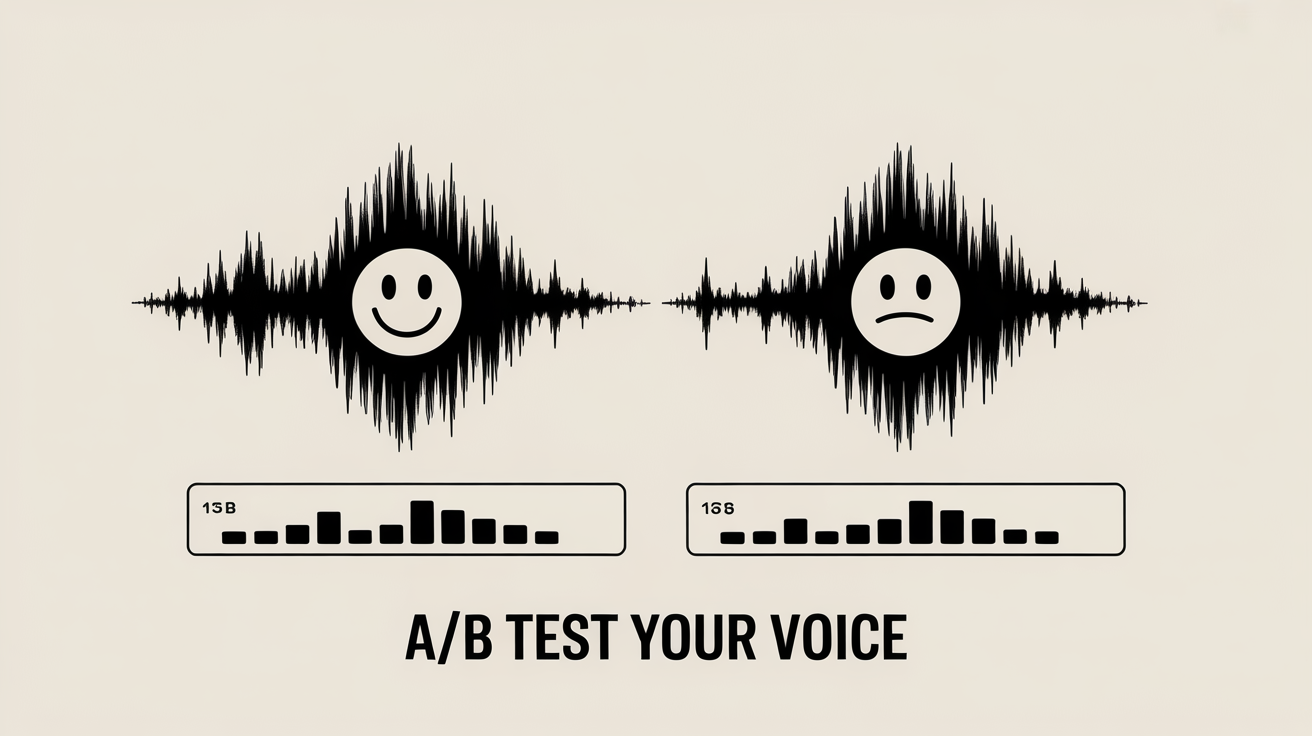
2. "Scratch Track" Liberation
Video editing is often a frustrating dance of timing visuals to an audio track that isn't finalized.
- The Tactic: Before you've even finalized your script, paste your rough draft into your voice cloner to generate an instant "scratch track."
- The Result: You can now edit your entire video—pacing your cuts, timing your B-roll, and adding graphics—to a perfectly timed (though not yet perfect) voiceover. When your script is final, you just re-generate the audio and drop it in. The timing will be identical. This flips the standard workflow on its head and can save hours of re-editing.
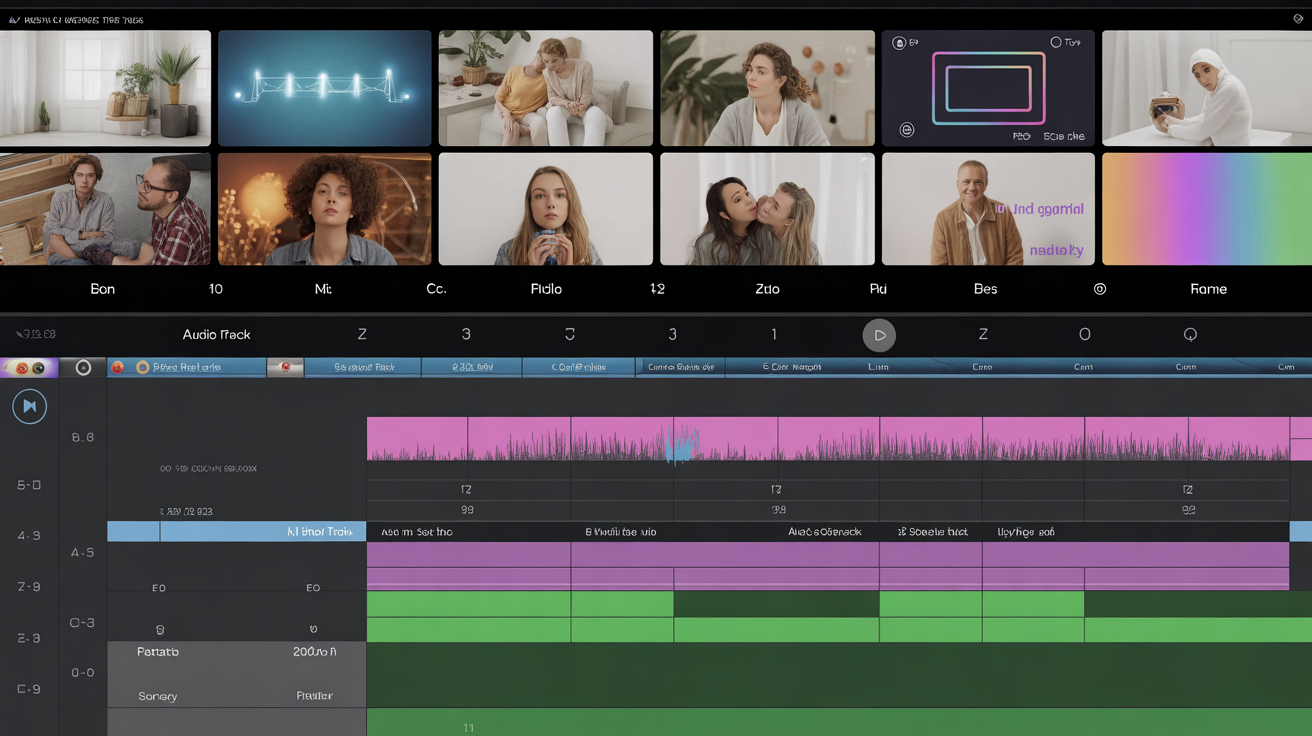
3. The One-Person Audio Drama
Want to create more dynamic content with multiple "characters" but don't have the budget for voice actors?
- The Tactic: Use your single voice clone as a base. Then, using a tool with advanced style controls like Kukarella, create variations. For one character, apply a slightly higher pitch and faster pace. For another, a lower pitch and a "gruff" custom style prompt.
- The Result: You can now write and produce entire dialogues, skits, or character-driven stories, all performed by "you." This is a massive leap for creative storytelling on a budget.
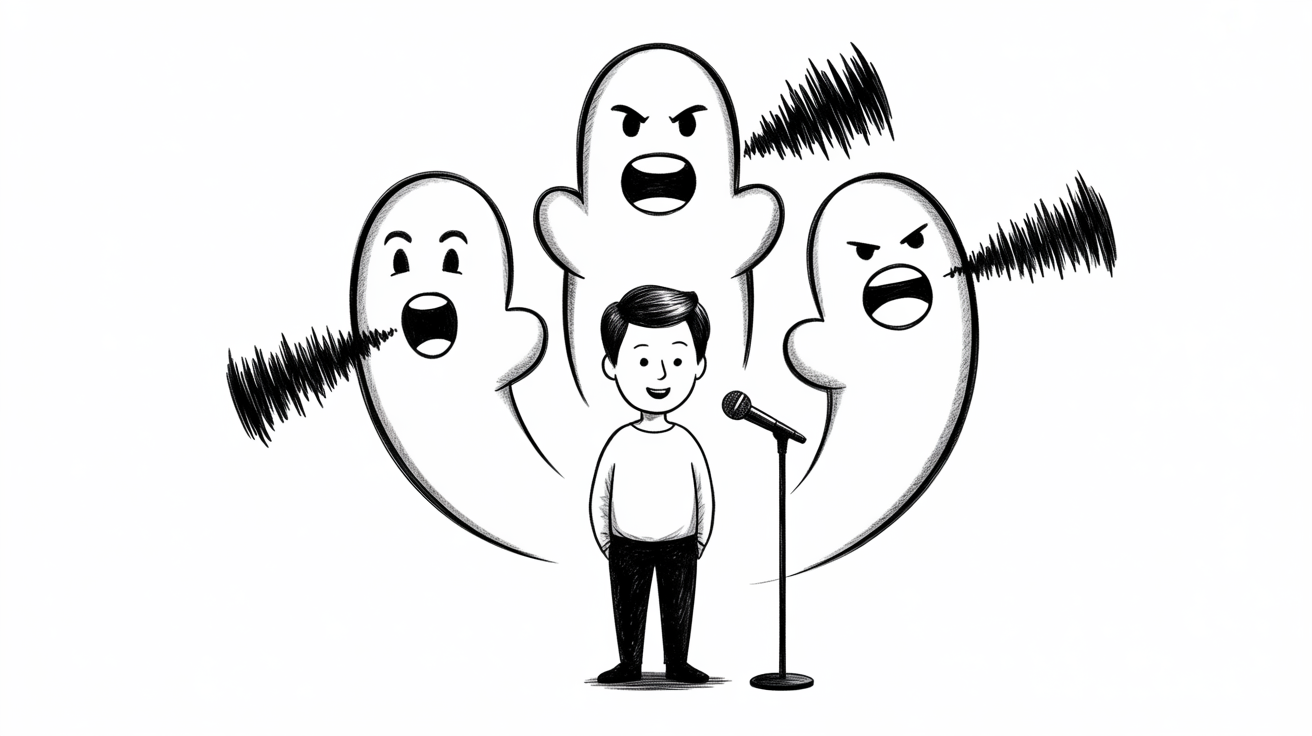
The Tool Ecosystem: Choosing Your Weapon
Kukarella: The All-in-One Production Studio. This is for the creator who sees the bigger picture. It's not just a voice cloner; it's a unified system for scripting (AI Assistant), cloning (with multilingual and emotional style capabilities), and transcribing. It's the choice for executing the "Content Atomization" strategy seamlessly. Its strong privacy stance—guaranteeing you retain full ownership of your voice data—is a critical defense against the kind of unauthorized voice cloning that plagued YouTuber Jeff Geerling.
ElevenLabs: The High-Fidelity Instrument. For creators who need the absolute highest-quality voice generation and are willing to build their own workflow by piping that audio into other editing tools. It's a powerful, specialized tool for the audio purist.
Descript: The Word-Based Editor. This is the go-to for creators whose primary pain point is post-production. Its "Overdub" feature is brilliant for fixing small mistakes in existing recordings. It's less about generating entire scripts from scratch and more about surgical correction.
| Feature | Kukarella | ElevenLabs | Play.ht | Descript |
| Core Function | All-in-One Content Suite | High-Fidelity TTS & Cloning | TTS & Voice Cloning | Audio/Video Editing & Transcription |
| Cloning Quality | Professional-Grade | Very High | High | Good (Overdub Feature) |
| Multilingual Cloning | Yes (Cloned voice speaks multiple languages) | Yes | Yes | No |
| Emotional Control | High (Custom, prompt-based styles) | Good (Preset styles) | Standard | Limited |
| Ease of Use | High | Moderate | Moderate | High (for editing) |
REALITY CHECK: The "Fine Print" on Your Digital Self
The case of Jeff Geerling, whose voice was cloned without permission by a company for their marketing videos, was a wake-up call. He wrote on Twitter and posted on YouTube, "This company... used an AI version of my voice, without my permission, to market their own product. Not cool." This isn't just a legal issue; it's a violation of your identity. When choosing a platform, their terms on data ownership are not fine print—they are the main feature. A platform that doesn’t give you 100% irrevocable ownership of your biometric data is a platform you should not trust with your voice.
Your First 30 Days with a Digital Twin: An Action Plan
Stop theorizing. Start creating.
Week 1:
Forge Your Asset. Clone your voice on a platform like Kukarella. Don't just do the basic clone. Create and save at least three Custom Voice Styles: your "Standard Narration," a "High-Energy Intro," and a "Calm, Authoritative Explainer."
Week 2:
Resurrect Old Content. Take your most popular blog post or an old video script. Generate a full podcast episode from it using your "Standard Narration" style. Publish it. You just created a new piece of content in under an hour.
Week 3:
Run a Performance Test. Take the intro for your next video and generate two versions using your "High-Energy" and "Calm" styles. Post them to Twitter or your community Discord and run a poll. Let your audience tell you what they prefer.
Week 4:
Go Global. Take your best-performing social media clip. Use the multilingual feature to generate it in one other language. Post it and see what happens.
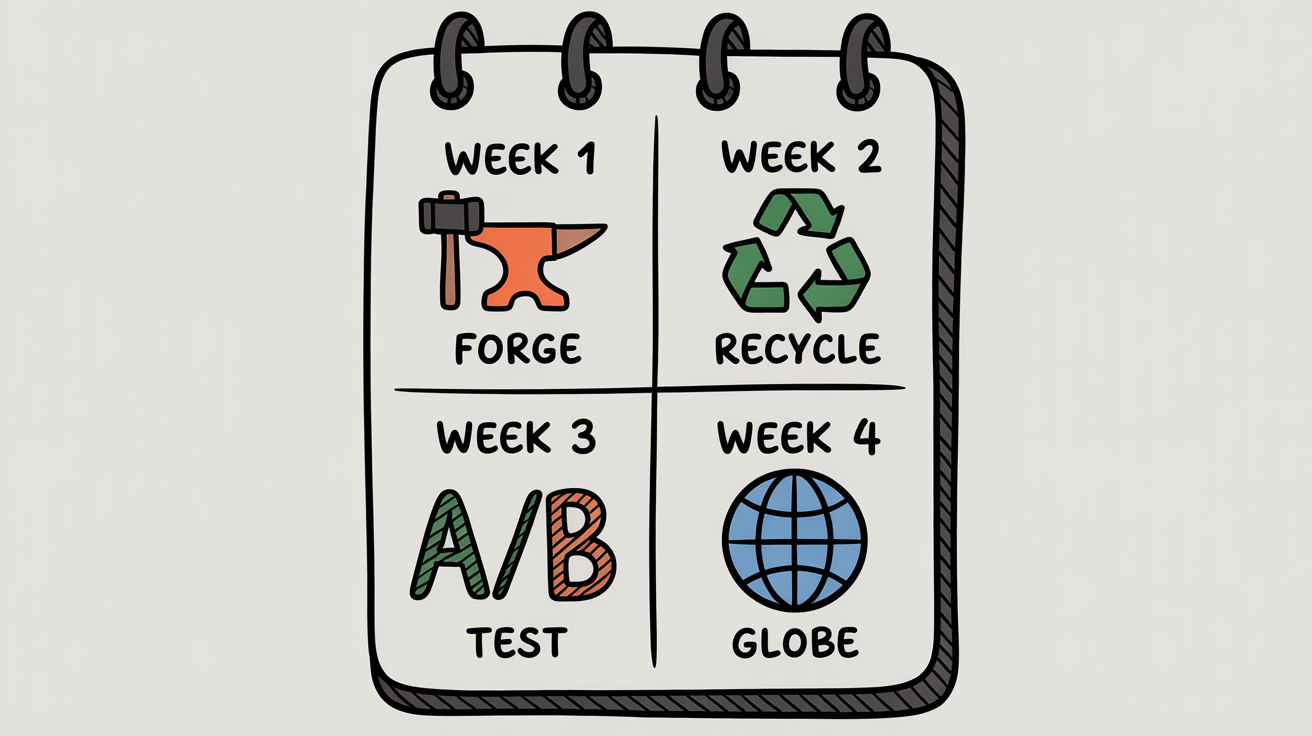
You have a choice. You can keep grinding on the content treadmill, or you can embrace the unfair advantage. Clone your voice, reclaim your time, and start building a content empire, not just a channel.
Troubleshooting & Advanced Scenarios
"My clone doesn't sound quite right."
This is almost always an issue of "garbage in, garbage out." A high-quality clone requires a clean, crisp, and clear initial recording. Use a decent microphone in a quiet room, and speak naturally.
Scaling Beyond Your Own Voice:
What if your content requires multiple characters? Instead of hiring multiple voice actors, you can use a combination of your own cloned voice and high-quality stock AI voices for different roles. A platform like Kukarella offers a vast library of voices that can be used alongside your own clone.
The "Faceless" Channel Strategy:
Many creators build successful YouTube channels without ever showing their face. Voice cloning is a supercharger for this model, allowing for rapid production of "Reddit story" style videos or informational content without the need for on-camera presence or constant narration.
Future Outlook: The Voice as a Platform
The future of voice cloning for creators is moving towards even greater realism and integration. We'll see:
- Real-Time Voice Translation: Imagine live-streaming in English, and your audience can choose to listen in Spanish, Japanese, or French, all in a real-time translation that still sounds like you.
- Voice-Driven Avatars: Combining voice cloning with AI video generation will allow creators to produce content featuring a digital version of themselves, further blurring the lines between the physical and digital creator.
- Ethical Guardrails: As the technology becomes more widespread, expect platforms and legislation to introduce more robust safeguards around consent and misuse, similar to the concerns raised by the unauthorized cloning of Jeff Geerling's voice.
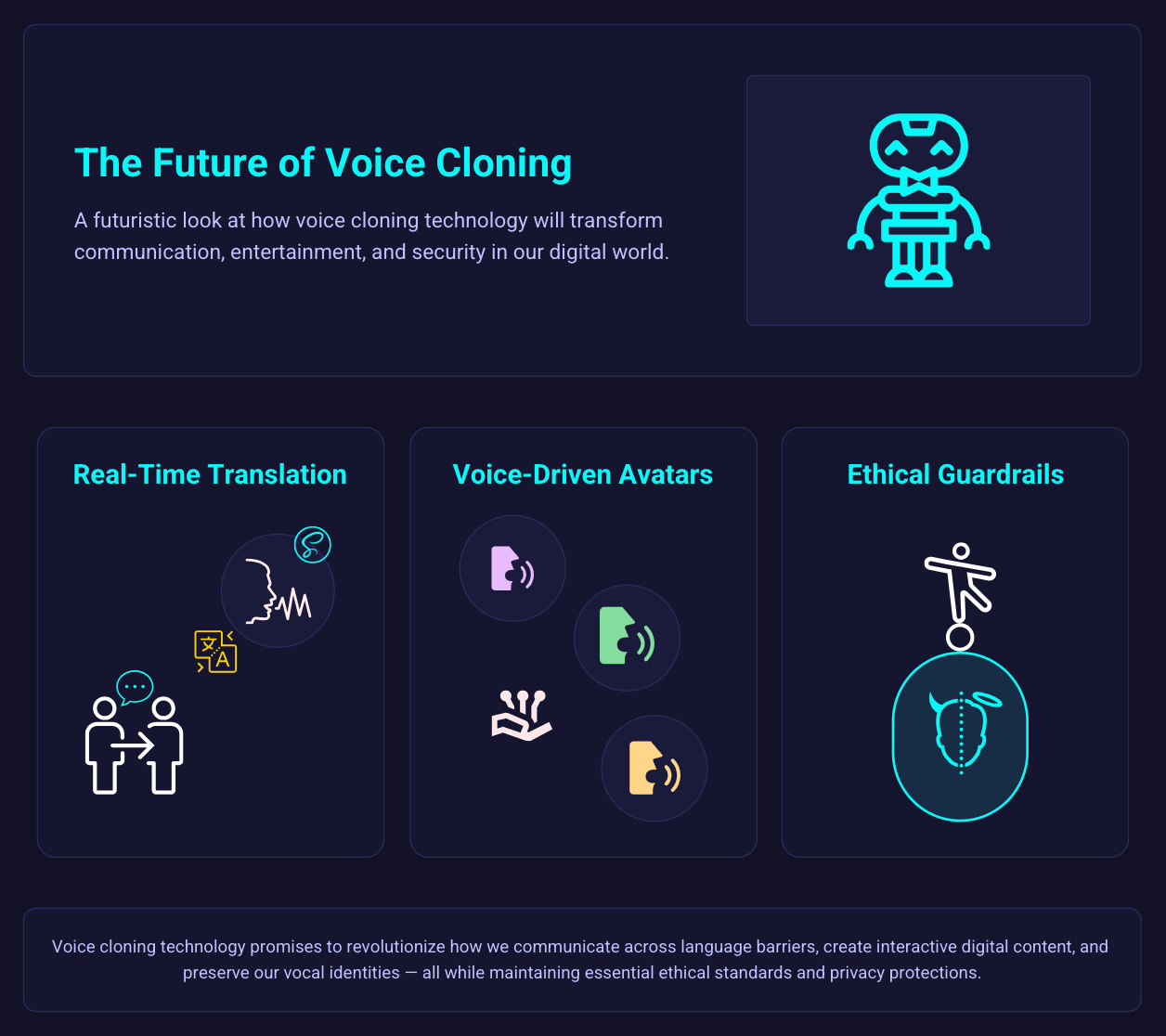
Your Action Plan to 10x Your Audio
- Audit Your Workflow: Identify the biggest time sinks in your current audio production process.
- Choose Your Platform: Select a voice cloning tool that aligns with your content needs, quality standards, and budget. Prioritize platforms that offer fine-tuned emotional control and robust privacy policies.
- Create a High-Quality Clone: Invest the time to create the best possible audio sample. This is the foundation of your entire scaled audio strategy.
- Start with Repurposing: The easiest way to get started is by converting your existing blog posts or scripts into audio formats.
- Experiment with New Formats: Use your newfound efficiency to explore new content types, like multilingual versions of your most popular videos or daily audio summaries for your community.
- Stay Authentic: Remember that voice cloning is a tool to amplify your creativity, not replace it. Use the technology to maintain your unique personality and connection with your audience, even as you scale.